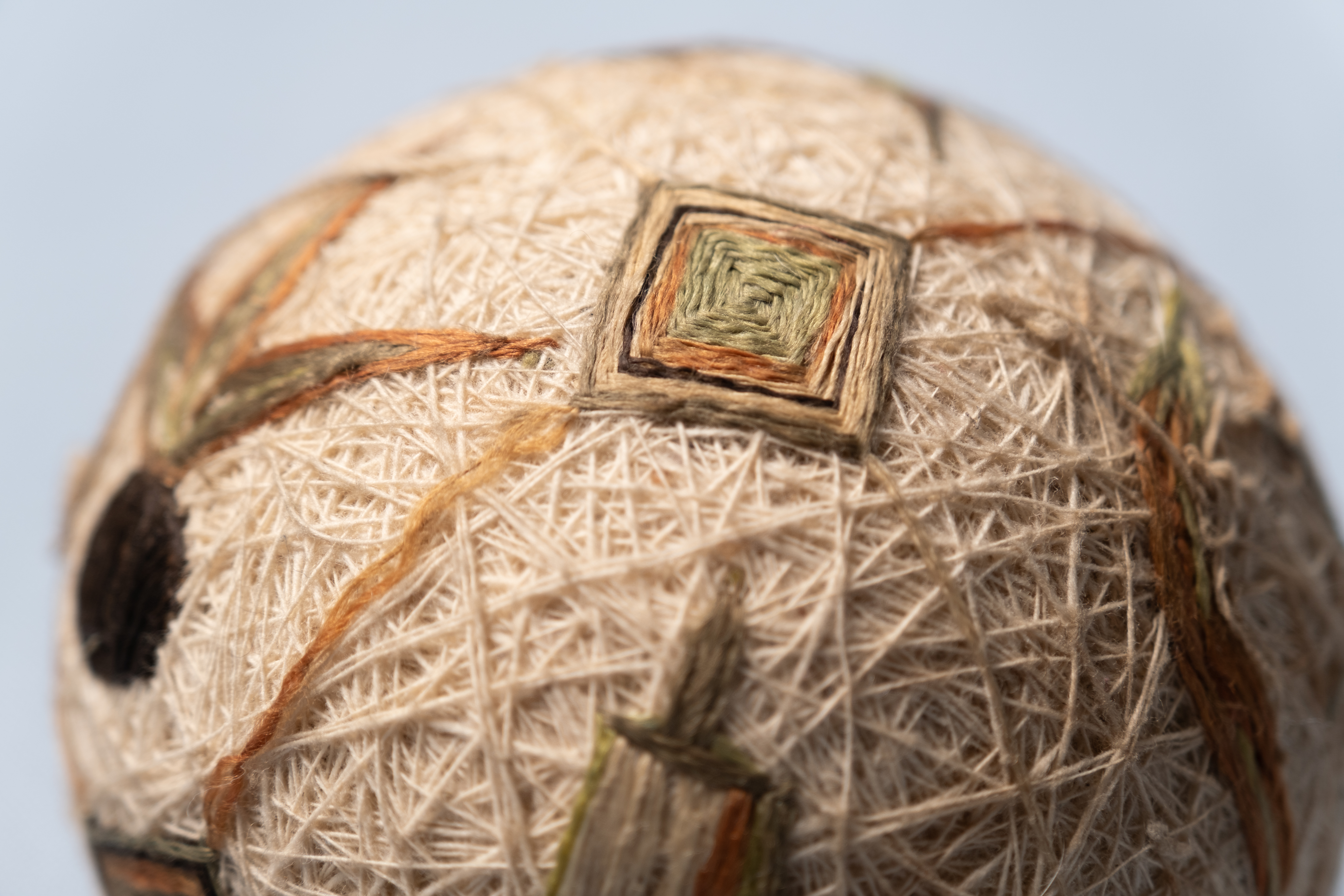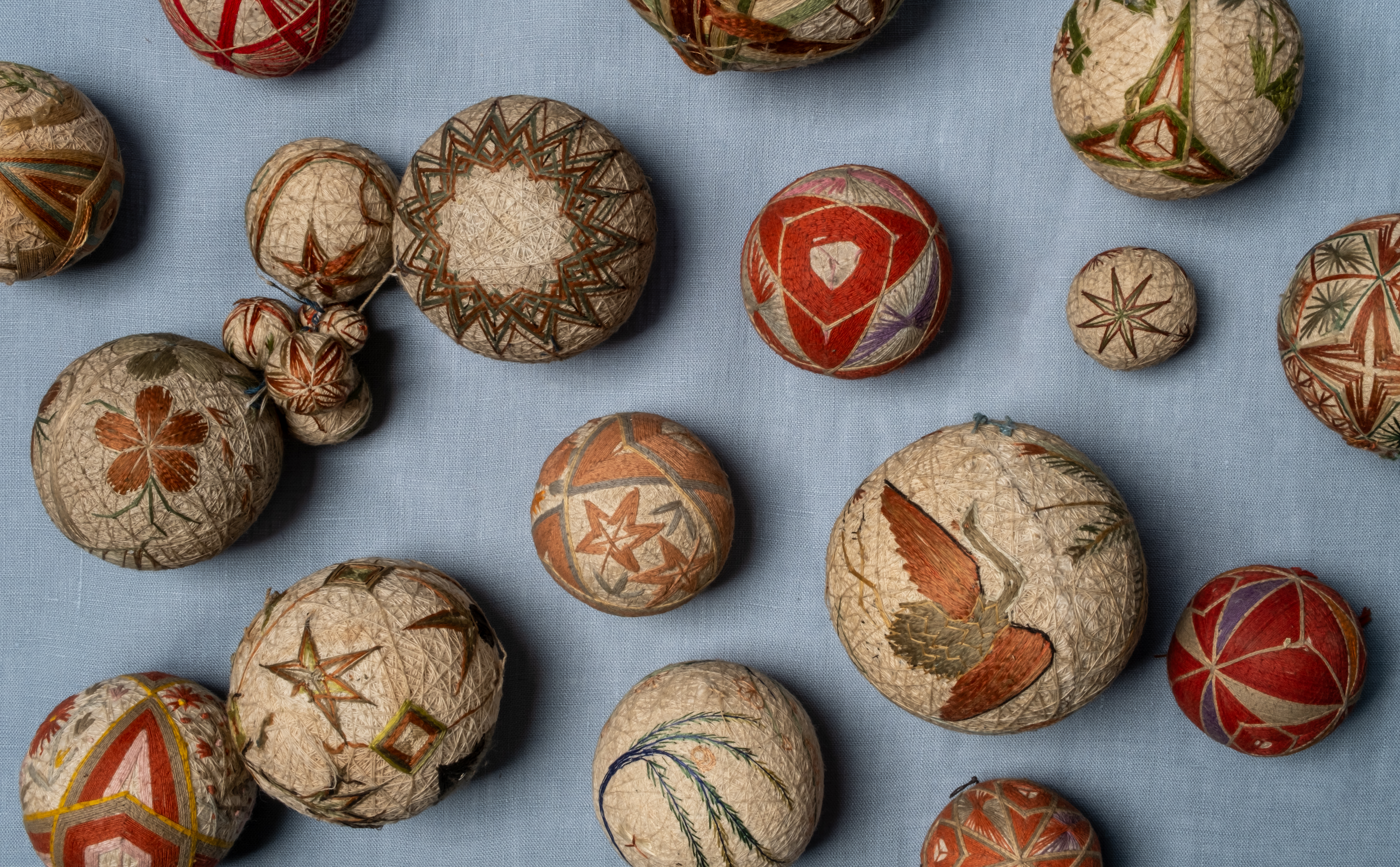
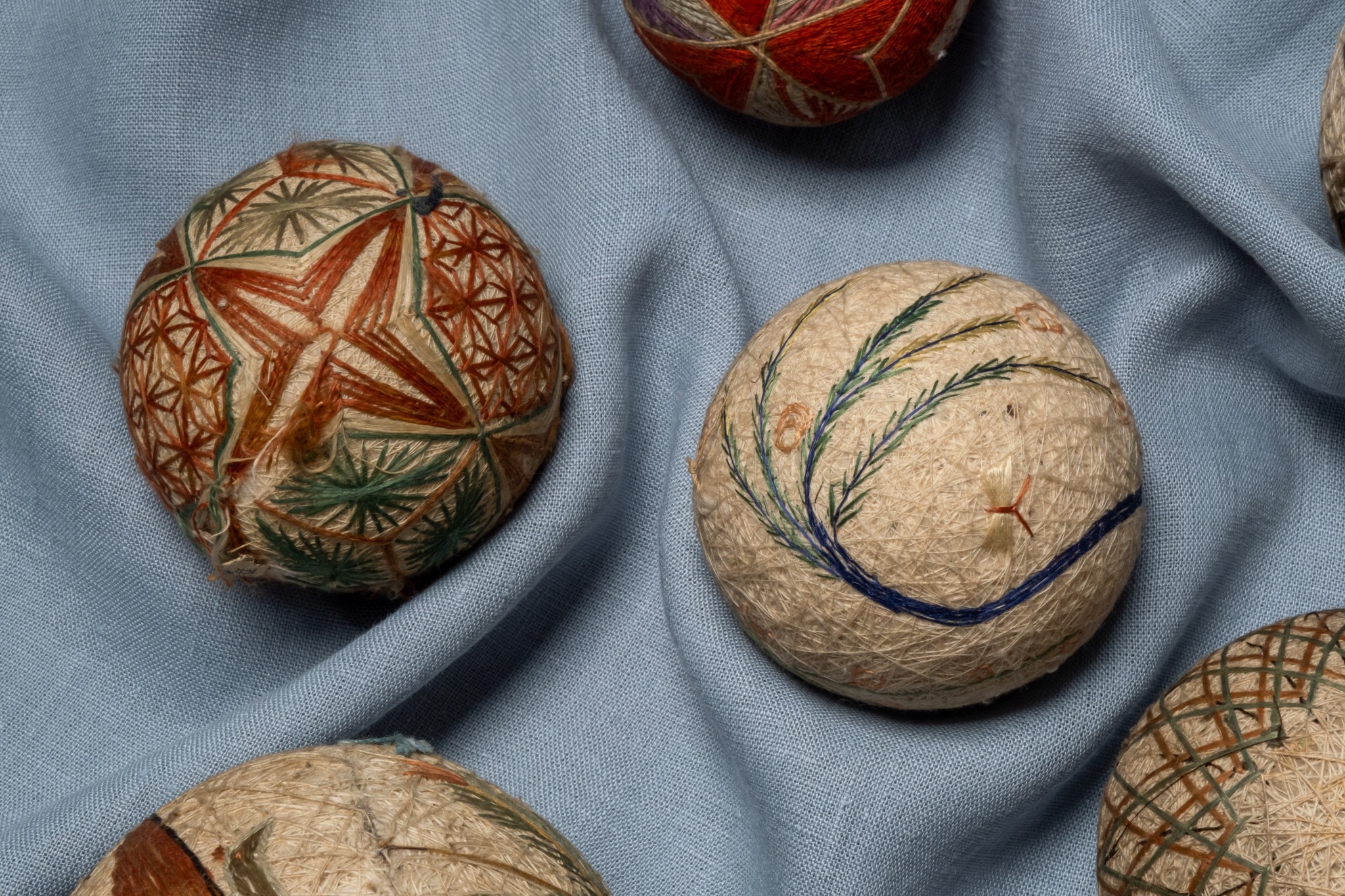
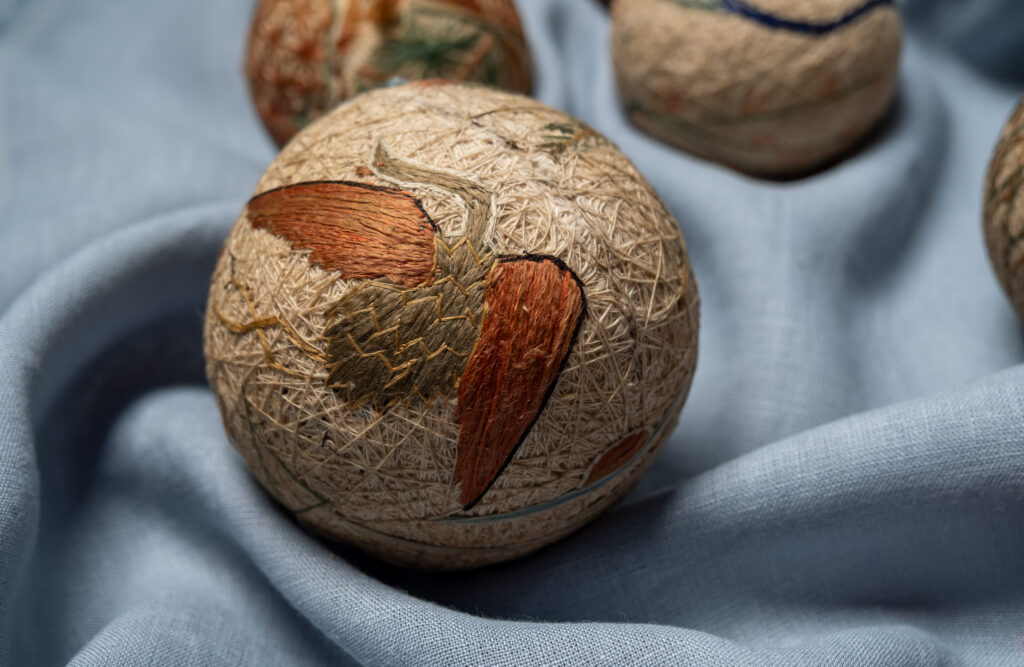
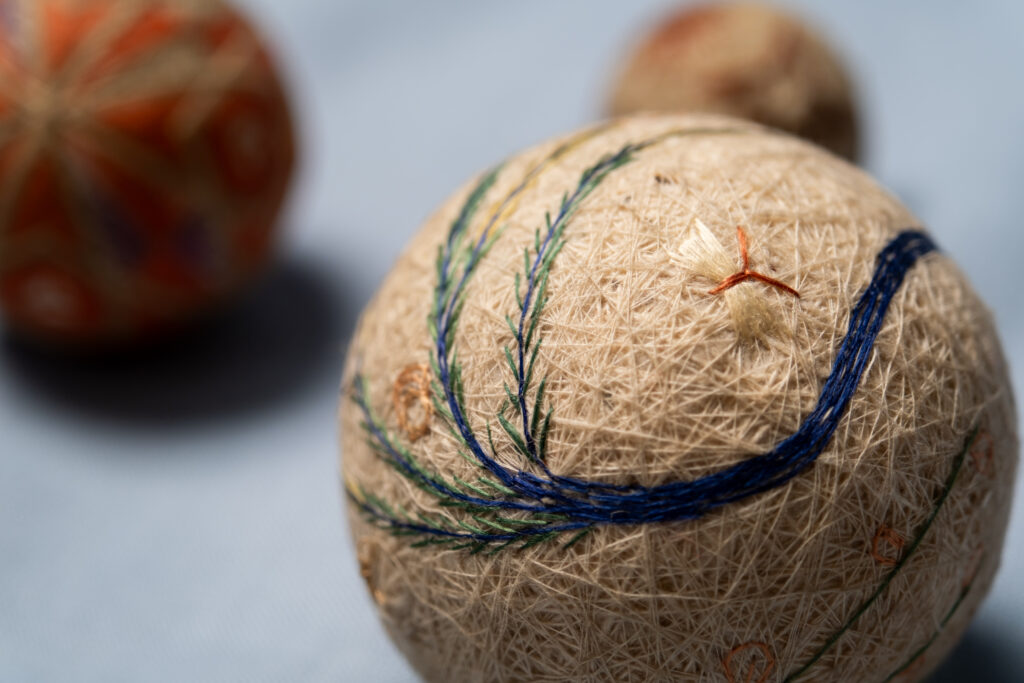
Temari are hand made, decorative balls which were originally made from layers of repurposed or leftover thread that was culled from various domestic sources.
The designs on temari are decorative by intention, and there is a reason for this. Temari were offered as gifts for children so the aim of the makers was to delight the child who was to receive this personalized gift. Sometimes small notes to the child were embedded in its center and other times a hollow core was loosely filled with grains of rice which rattled as the temari was handled. Touch, sight and sound are the senses called into play by this humble, hand made object of affection.
I’ve been collecting mid nineteenth century temari for a few decades.
The reason is that they exemplify one aspect of a subject in Japanese folk textiles that both interests me and is unavoidable since it is so proliferated in this genre, and that is the repurposing of materials. The designs of these late Edo, early Meiji temari appeal to my aesthetic because their colors are muted–they are derived from botanical sources–and the surface designs are relatively simple in concept. I appreciate soulful rusticity in Japanese folk textiles and the drab colors and simple decoration of these early temari are just that.
While the temari being made today often use rich, saturated colors, my eye likes to retreat to their antecedents who are a bit quieter and whose presence evokes the quotidian culture of the last gasp of Japan’s feudal history.
words by Stephen Szczepanek of Sri Threads
https://www.srithreads.com/
Interested in learning how to make Temari? Join us for an in-person workshop at the TATTER Brooklyn studio on April 6th, 2024. In this workshop, instructor Yoriko Yamamoto also uses hand dyed threads, which are naturally muted and give a lovely nod to original temari of the Edo period.
